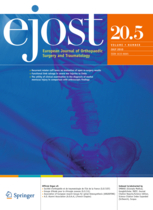
TRAUMA
Position of screws in polyaxial vs. monoaxial locking plates for proximal humeral fracture
Eur J Orthop Surg Traumatol. 2014 Jul;24(5):747-52124 patients who suffered a proximal humeral fracture with displacement >1 cm and angulation of fragments > 45 degrees, were randomly assigned to treatment with either monoaxial or polyaxial screw-inserted locking plate fixation. The primary purpose of this study was to compare the chosen positioning of locking screws between the two treatment groups. Results demonstrated that there was no significant difference between the placement or positioning of polyaxial versus monoaxial screws. A mean of 6 screws purchased the humeral head in the monoaxial group compared to a mean of 4 in the polyaxial group. However, loss of fixation was observed more frequently when fixation (with either device) did not include at least one screw within the superoposterior region of the humeral head.
Unlock the full ACE Report
You have access to {0} free articles per month.Click below to unlock and view this {1}
Unlock NowCritical appraisals of the latest, high-impact randomized controlled trials and systematic reviews in orthopaedics
Access to OrthoEvidence podcast content, including collaborations with the Journal of Bone and Joint Surgery, interviews with internationally recognized surgeons, and roundtable discussions on orthopaedic news and topics
Subscription to The Pulse, a twice-weekly evidence-based newsletter designed to help you make better clinical decisions
Exclusive access to original content articles, including in-house systematic reviews, and articles on health research methods and hot orthopaedic topics
Or upgrade today and gain access to all OrthoEvidence content for just $1.99 per week.
Already have an account? Log in


Subscribe to "The Pulse"
Evidence-Based Orthopaedics direct to your inbox.
{0} of {1} free articles
Become an OrthoEvidence Premium Member. Expand your perspective with high-quality evidence.
Upgrade Now












































































